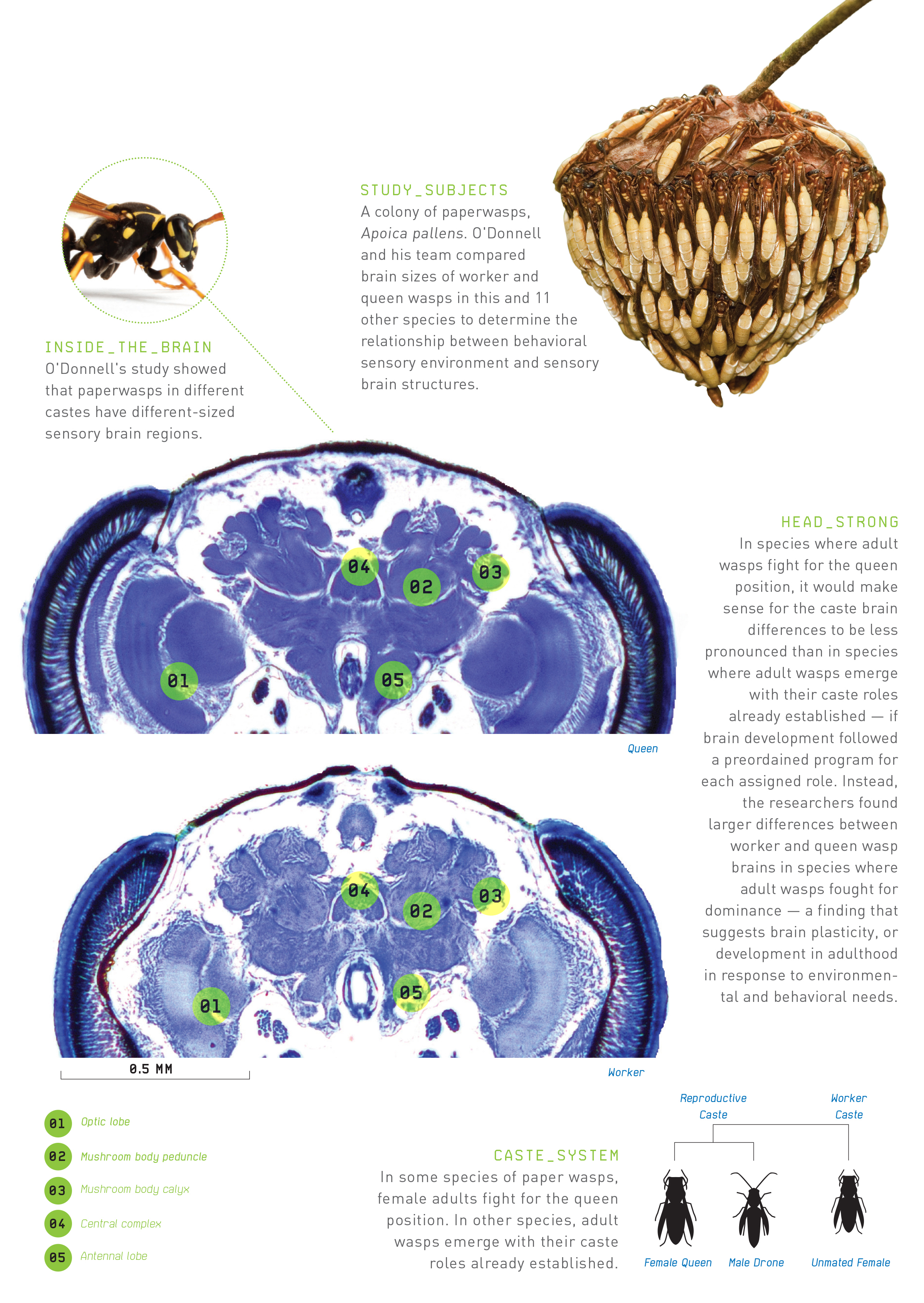
_Sean O'Donnell
O’Donnell is a professor in the Department of Biodiversity, Earth and Environmental Science in the College of Arts and Sciences.
In paperwasp colonies, the queen of the hive is a homebody who mostly stays in the dark. The worker wasps, on the other hand, fly outside to seek food and building materials. And the difference in how much they see and experience of the world around them is written on their brains.
A new study in Behavioral Ecology and Sociobiology indicates the brain regions involved in sensory perception develop differently among the wasp castes that rely more on their senses.
“The wasps in different castes within a colony don’t differ much genetically,” says Sean O’Donnell, a professor in the College of Arts and Sciences’ Department of Biology who led the study. “The differences we see show the signature of the environment on brain development.”
O’Donnell’s team found that the queen wasps had smaller brain regions for processing visual information than the workers in their own colonies. The pattern held across most of the 12 species of paperwasps they studied.
“The strong behavioral and ecological differences between individuals within insect colonies make them powerful tools for studying how individual brain differences come about, and their functional significance,” O’Donnell says.
O’Donnell noted that sampling juvenile wasps at multiple stages of brain development would help confirm the finding suggested by his study.


